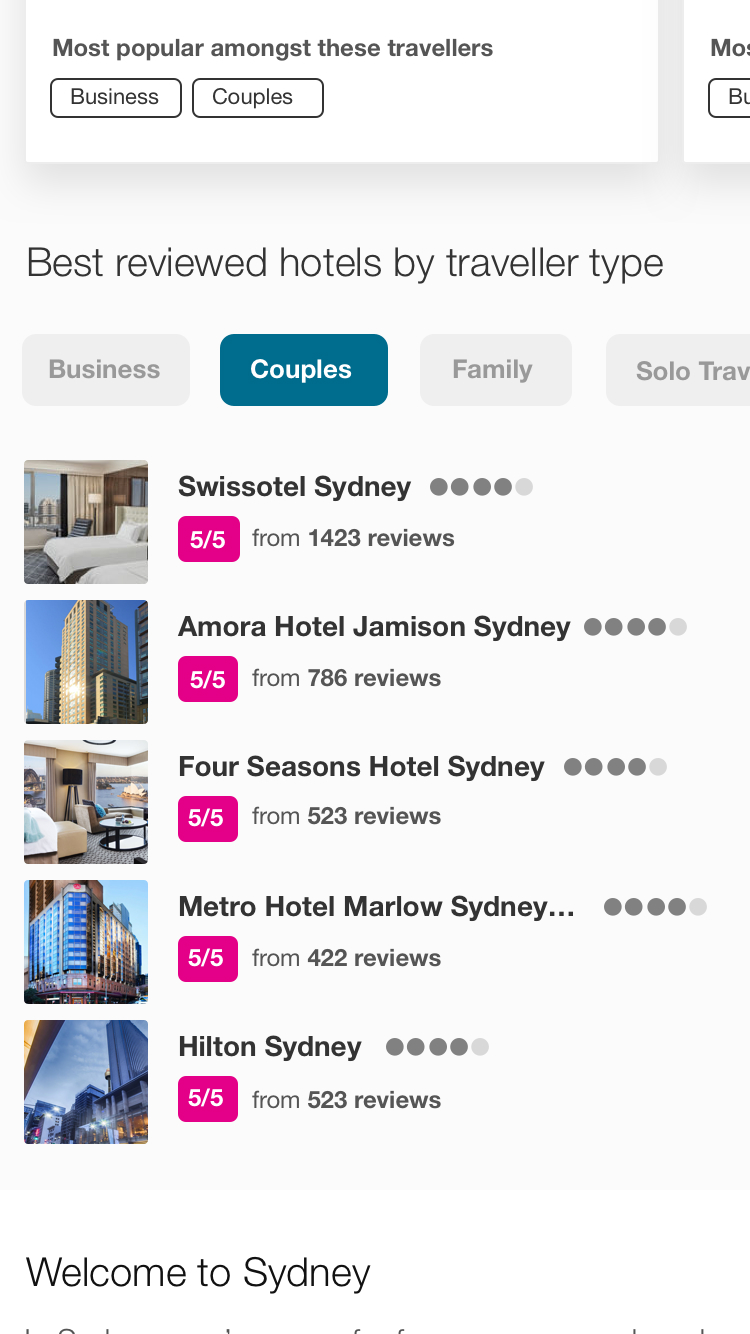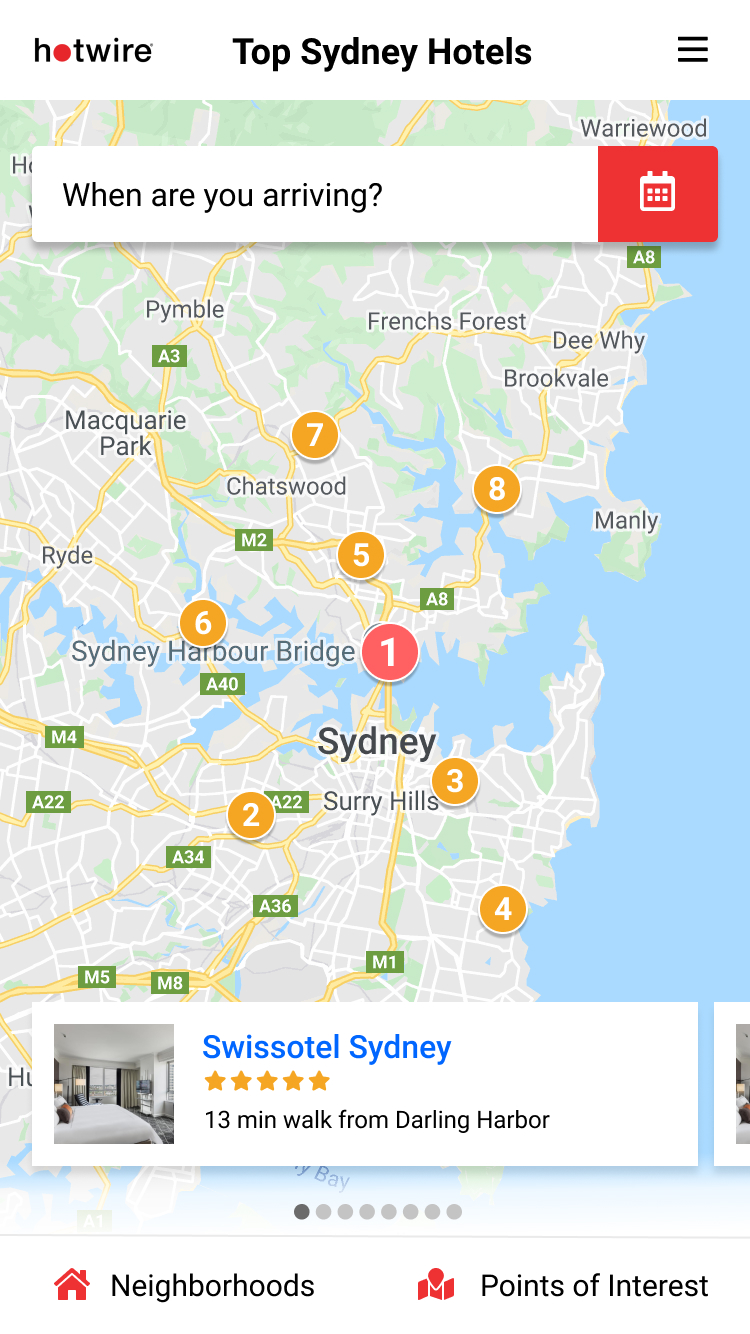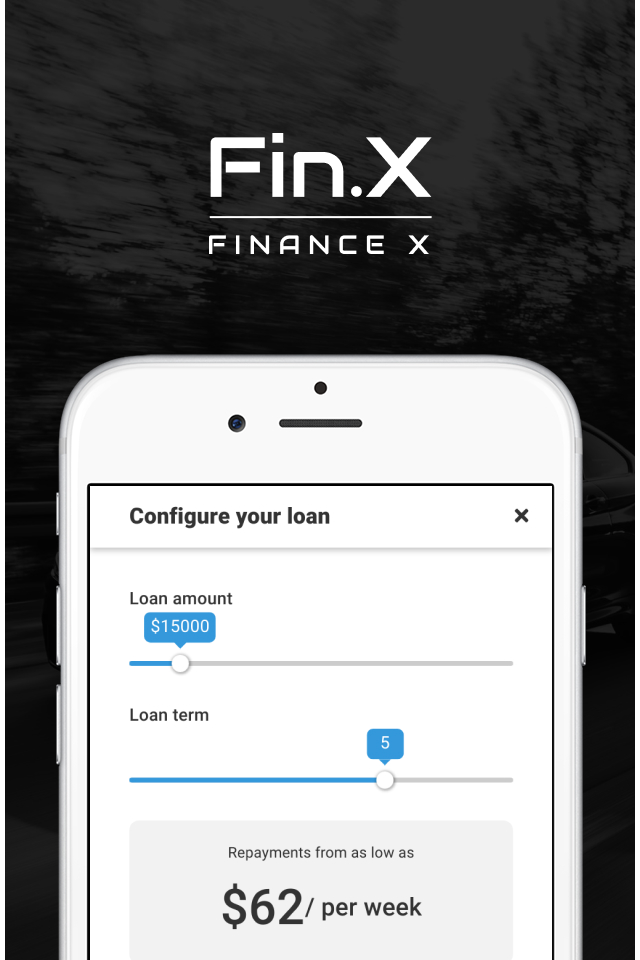
Multi-brand differentiation
This video is a demo of an end to end redesign to assist with Wotifs brand differentiation effort.
Mo' Brands Mo' Problems
Wotif was acquired by Expedia in 2014. It was the third consumer travel brand Expedia had acquired, with two more to follow shortly after.
Each brand brought on to the Expedia platform would have its existing website replaced with a templatised version of Expedia.com. This made maintaining code bases a breeze as well as rolling out any new features.
The only down side to this approach was that Google started penalising the group's landing pages for having duplicate content. This meant that if two or more brands were competing against each other in the same region, only one of them would get a spot in Google and they others were discarded. The original intention was that Expedia's brands would take up positions one, two and three when someone searched for a travel product.
Crawling our way back into Google
The team ran a bunch of tests to measure the traffic to each landing page when we made various changes. These changes included changing titles and labels, reorganizing the content heirarchy, recompiling Javascript to use different variable names and made sure the use of expedia.com was not used in any scripts. The most succesful tests were the ones where multiple changes were made to the content, including the UI.
The ideal way to resolve these duplication issues would be for each brand to come up with their own unique brand guidelines but this would most likely take up to a year to complete and the discarded brands were losing a lot of money every day by getting access to the traffic from Google. So instead we chose to stay away from any brand level changes and instead created five unique content themes and assigned each brand a theme. These themes would dictate what kind of content we would prioritise, which in turn would guide our designs.
Theme list
| Name | Content focus |
|---|---|
| Direct | Existing theme untouched to use as a control |
| Reviewer | User generated content such as reviews and ratings |
| Lens | High quality destination and hotel images |
| Locale | Heavy use of maps and focus content on hotel location |
| Select | Increase amount of hotels displayed. Present similar to a retail catalogue |
Theme examples

User reviews and hotel ratings were added to hotel cards. This theme also lead with a sentence explaining what the city is highly rated for.

Further lists of hotels were sorted by best reviewed across multiple traveller types.

Top hotels are shown on a map. Each hotel mentions distance to a popular point of interest.

Further lists of hotels are broken down by neighborhood. Each neighborhood uses a map thumbnail to show distance to city centre.
Putting it all together
The increased traffic returning to the landing pages was great for the business but the user experience was suffering as the rest of the shopping path was not differentiated. This meant that once the user clicked a link there was on obvious disconnect.
It became clear that the right way to do this would be to break free from the one size fits all approach and start the differentiation from the home page all the way through to check out. This would naturally resolve the duplication penalties in Google and also create a stronger connection between the shopping experience and the marketing material shown on television.
Below is a demonstration of a protoype I built that uses real data to deliver an experience that is localised to Australian travellers and recnogizable for anyone who has been exposed to Wotif advertisements.







